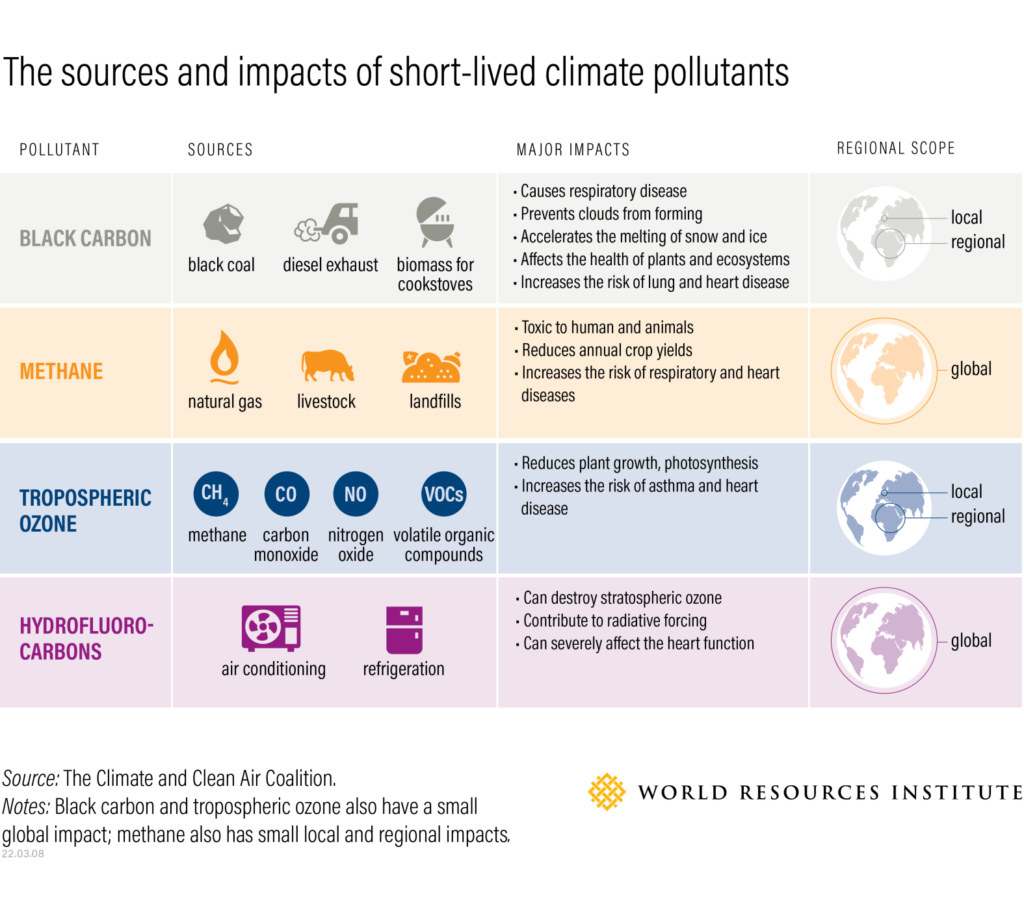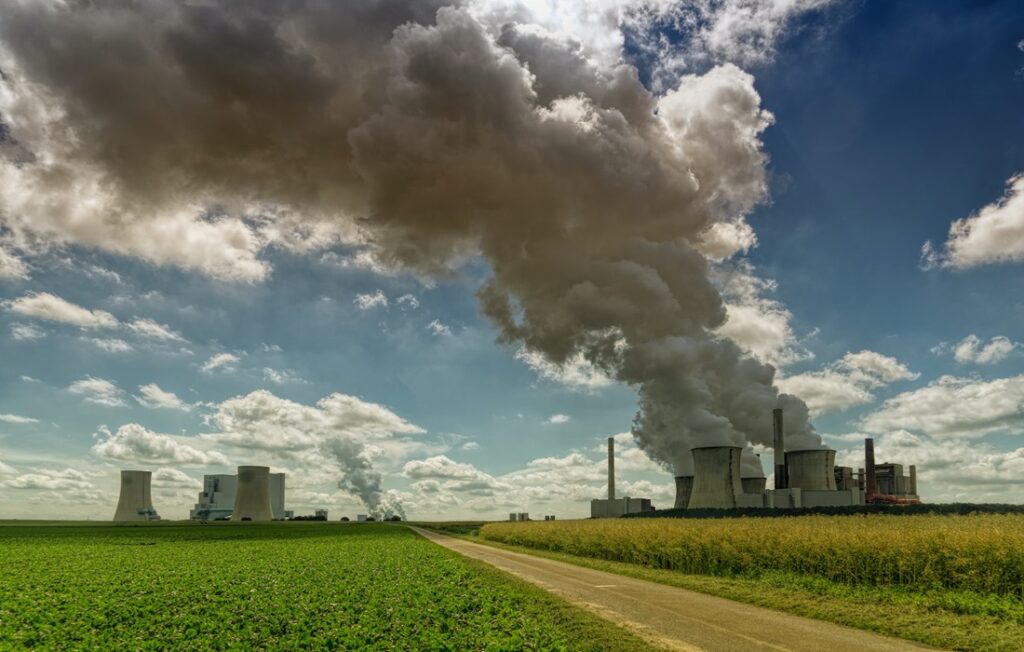Air pollution. It’s common knowledge at this point that it’s capital “B” Bad News. But did you know that since the year 2000, thanks in large part to the Clean Air Act and all the various efforts to keep it updated and relevant, the amount of microscopic, health-damaging particles has been reduced by 40% in the United States. That’s a pretty significant achievement.
The Clean Air Act is also cited for the reduction of six main air-based pollutants: inhalable particulate matter (PM2.5), ground ozone, lead, carbon monoxide, nitrogen dioxide, and sulfur dioxide. Impressively, the combination of these pollutants dropped 78% between the years 1970 and 2020. This goes to show the power of supporting the continuous development and improvement of environmental legislation.
However, increased mega-wildfires as a result of climate change has erased approximately 25% of those air quality gains.
So where does that leave us?
And what about super pollutants? We haven’t even mentioned those yet.
What Are Super Pollutants?
By definition, a super pollutant is one that has a short shelf life when compared to carbon dioxide (CO2), but which has the potential for much more significant warming and polluting effects while in our atmosphere. Let’s use methane as an example.
Trapped methane helps with the formation of ground level ozone—a hazardous air pollutant and greenhouse gas. Methane has more than 80 times the warming power of carbon dioxide, though it only stays in our atmosphere for roughly 20 years (compared to CO2’s hundreds—even up to a thousand—years). It’s believed that approximately 45% of today’s global warming is a direct result of methane emissions.
In addition to methane, the other three main super pollutants include hydrofluorocarbons, ground-level ozone (a.k.a. tropospheric ozone), and black carbon. Here’s a great infographic from the World Resources Institute that outlines where these super pollutants come from and how they impact people and the planet:

As mentioned, these super pollutants have shorter life spans in our atmosphere, which is why they are also commonly referred to as Short-lived Climate Pollutants (SCLPs).
If we are going to meet the mid-century goal of being net-zero, not just on a national level, but globally, we are going to need to address these SCLPs and fast. Concentrations of SCLPs were recorded at their highest in 2019 compared to the last 800,000 years of our earth’s history. This tells us that not only are they man-made, but they are also rapidly accelerating in production. Luckily, because they are so short-lived, making significant changes now can rapidly improve the state of our planet.
The Dangerous Effects of Super Pollutants
Air quality is the largest human and environmental health risk. From the particles and toxins we breathe in, to the rate at which they enter our blood stream, air pollution is dangerous. Period.
Every year, roughly 7 million people die premature deaths due to ailments and/or diseases developed after being exposed to air pollution; both indoor and outdoor. For the record, that’s less than one million shy of the entire population of New York City.
In humans, exposure can lead to chronic—even deadly—health conditions of the lungs and heart as well as stroke, diabetes, and adverse outcomes related to pregnancy and birth.
Where Do They Come From?
Fossil fuels. Surprise, surprise, once again the burning of fossil fuels is the main source of super pollution, though we can’t leave out agriculture and waste. Here’s a quick breakdown of the most common super pollutants by source:
- Methane – natural gas and petroleum, gas from livestock, landfills, coal mining, and wastewater treatment.
- Black Carbon – fossil fuels, biofuels, biomass, wildfires, agricultural burning, domestic cooking, natural-gas powered generators, and other industry-related outputs.
- Hydrofluorocarbons (HFCs) – manufactured for use in refrigeration, air conditioning, aerosol, fire protection products, solvents, and insulation. (The fastest growing greenhouse gas; tens of thousands of times more potent than CO2.)
Human and Environmental Impacts
Reducing and removing super pollutants in our atmosphere will lead to dramatically improved air quality and better public health on a global scale. Part of this includes climate and food security. Our global food systems are highly susceptible to vulnerabilities as a result of climate change. Simultaneously, agriculture is one of the largest sources of SLCPs. It’s believed that methane alone has resulted in crop loss of roughly 110 million tons annually.
Habitats and wildlife are also negatively impacted. Air pollution leads to destructive weather patterns and habitats, such as acid rain, haze, eutrophication (excessive richness of nutrients in a given area, which can impact plant growth, removing oxygen from bodies of water and killing off animal life), and the spread of disease.
Unbalanced Exposure
Research shows that Black communities are significantly more vulnerable to poor air quality than any other racial group in the United States. Globally, there is also an outsized impact on women (largely due to kitchen-based indoor pollution exposure) and the impoverished.
According to research done in 2016, the average concentration of PM2.5 (inhalable particulate matter) for Black populations was 13.7% higher than that of white populations. Equally as concerning, the Environment Integrity Project released a report in 2020 that found 13 separate oil refineries across the U.S. had released benzene—a highly toxic pollutant—into largely minority and low-income neighborhoods.
This exposure isn’t random and stems from decades, centuries, of environmental injustices throughout the United States and around the world. Black and Brown communities of color have long been suffering from racist practices and policies that prioritize putting natural gas, coal, and oil plants in neighborhoods of color and away from the white majority, fully knowing the negative health implications this will have.
Solutions: What to Support and How to Get Involved
Environmentalists, activists, scientists, and legislators around the world are already striving to research, develop, and implement regulations to help curb super pollutants and their negative harm on humanity and our planet:
- A 2023 analysis by CATF demonstrates the potential for the European Union to establish strong methane regulations which could impact the lives of 10 million people.
- At COP26 in 2021, the European Union and United States launched the Global Methane Pledge, an agreement to rapidly reduce methane emissions from energy, agriculture, and waste by at least 30% by 2030 in order to curb global warming and keep it under 1.5°C.
- The state of California has developed its own short-lived climate pollutant reduction strategy, which intends to address methane levels through statewide organic waste recycling as well as surplus food recovery.
- The EPA is also proposing new, stricter updates to the National Ambient Air Quality Standards (NAAQS) in order to better address and regulate super pollutants. This final proposal for these updates is due no later than December 2024.
And while these various pieces of regulation and legislation are good to see and certainly foreshadow progress in reducing super pollutants around the globe, the truth is, we’re just not there yet. A lot of governments (most certainly including the United States) have made big promises and set large goals for the reduction of carbon and other pollutants, but we’re still nowhere near achieving these goals or even the stretch goals needed to achieve the goals outlined in the Paris Agreement.
Progress cannot stop with a simple promise.
We must consistently encourage our representatives to prioritize the decarbonization of our global economy. Specifically, we should be:
- Transitioning to clean energy
- Plugging leaks (or entirely removing) oil and gas extraction pipelines
- Reducing food waste
- Recycling (composting) organic waste
- Capturing emissions from landfills
- Dramatically revamping and improving agricultural practices globally (including eliminating the usage of toxic pesticides and fertilizers)
- Adopting efficient heating and cooking methods
- Improving capacity planning for municipalities in order to improve efficiency for programming (such as food recovery)
Prioritizing better recordkeeping, enforcement, and reporting
Solutions at home
As far as what you can do at home, it’s pretty simple. Keep holding your representatives accountable. If they’re not supporting the move away from fossil fuels, be loud and persistent about your dissent. In your own life, consider in what ways you rely on fossil fuels and polluting chemical agents and make a switch to cleaner, greener products.
You can also show your support to some of our Nonprofit Partners actively working every day to improve air quality and remove super pollutants from our atmosphere. Learn more about their orgs, donate, and show your support by sharing their mission with others in your community and across the nation!
- Center for Clean Air Policy | International
- Clean Air Council | Local – Philadelphia, PA
- Clean Fuels Ohio | Local – Columbus, OH
- Project Drawdown | International
- RMI (Rocky Mountain Institute) | National
- Southern Alliance for Clean Energy | Regional – Southeast USA




